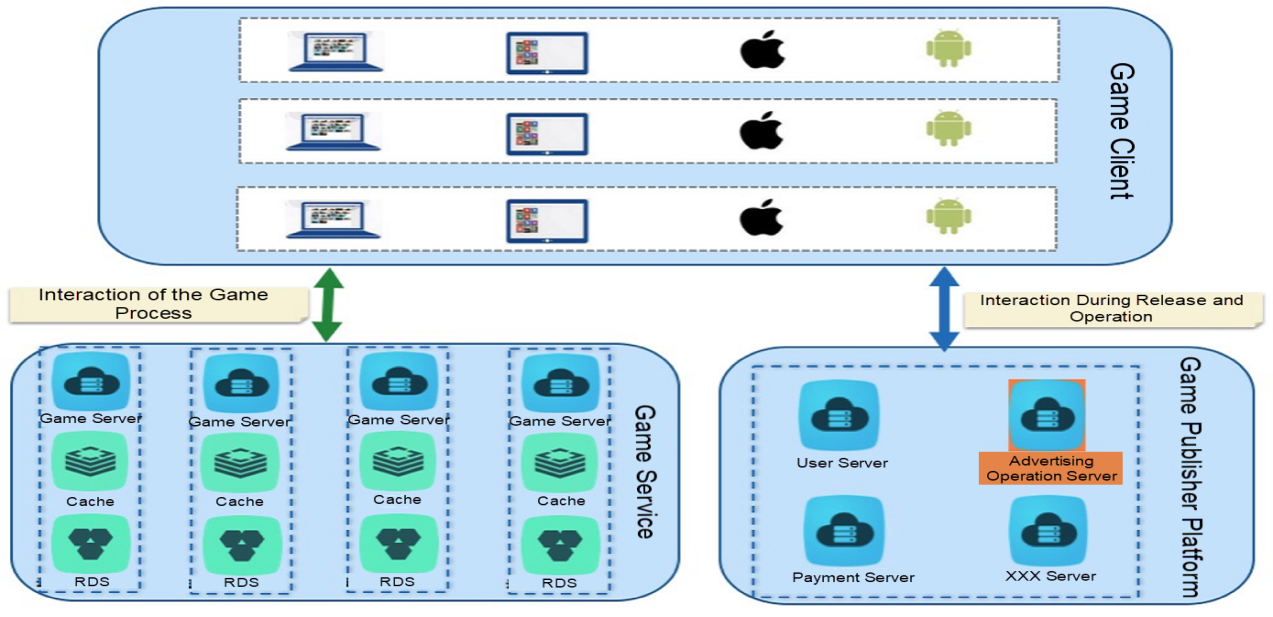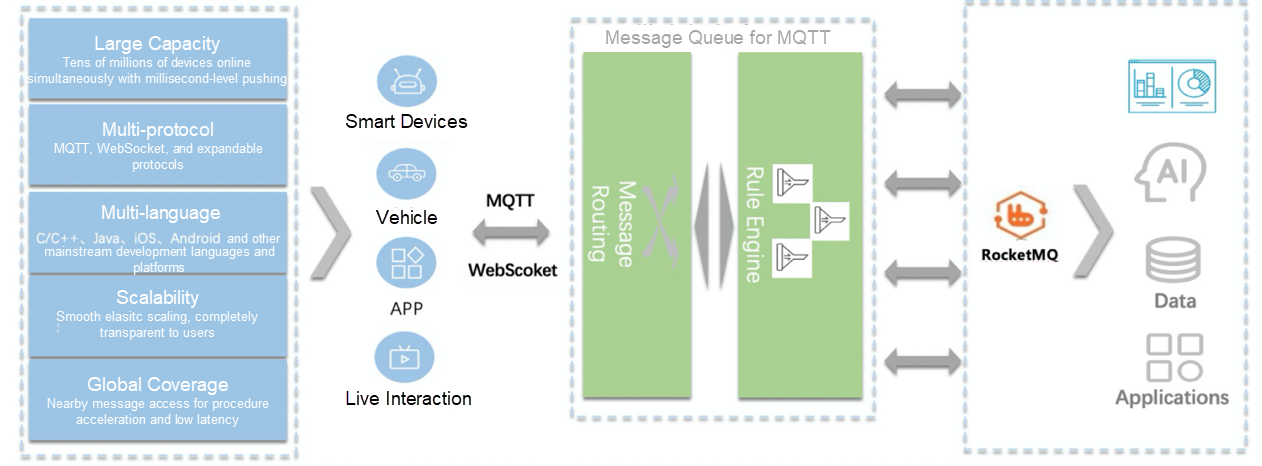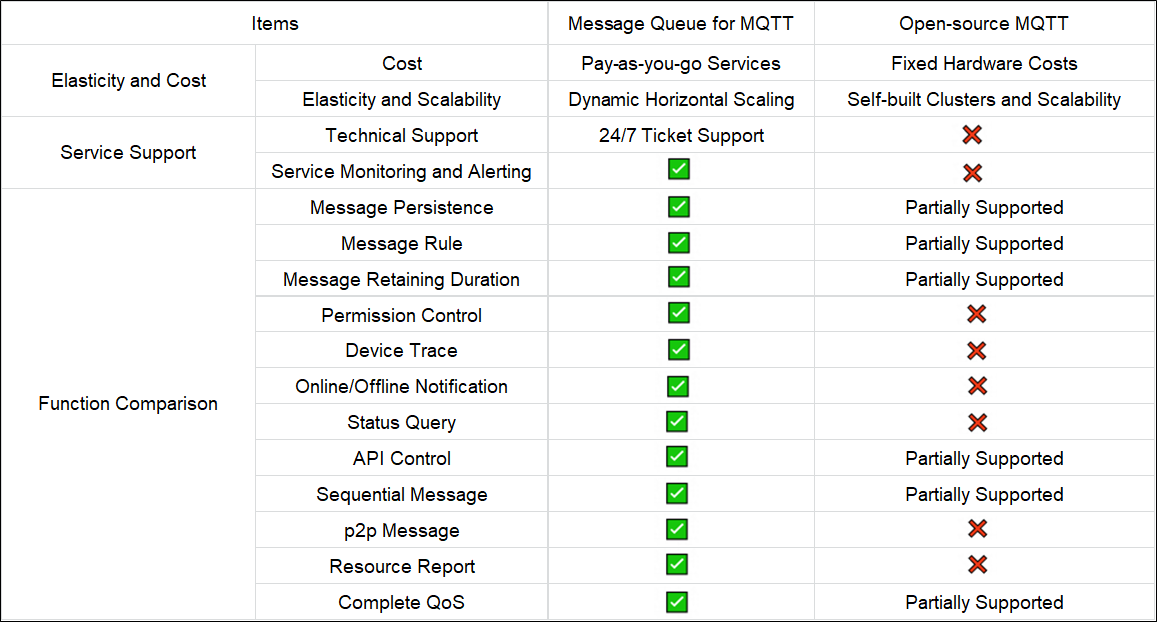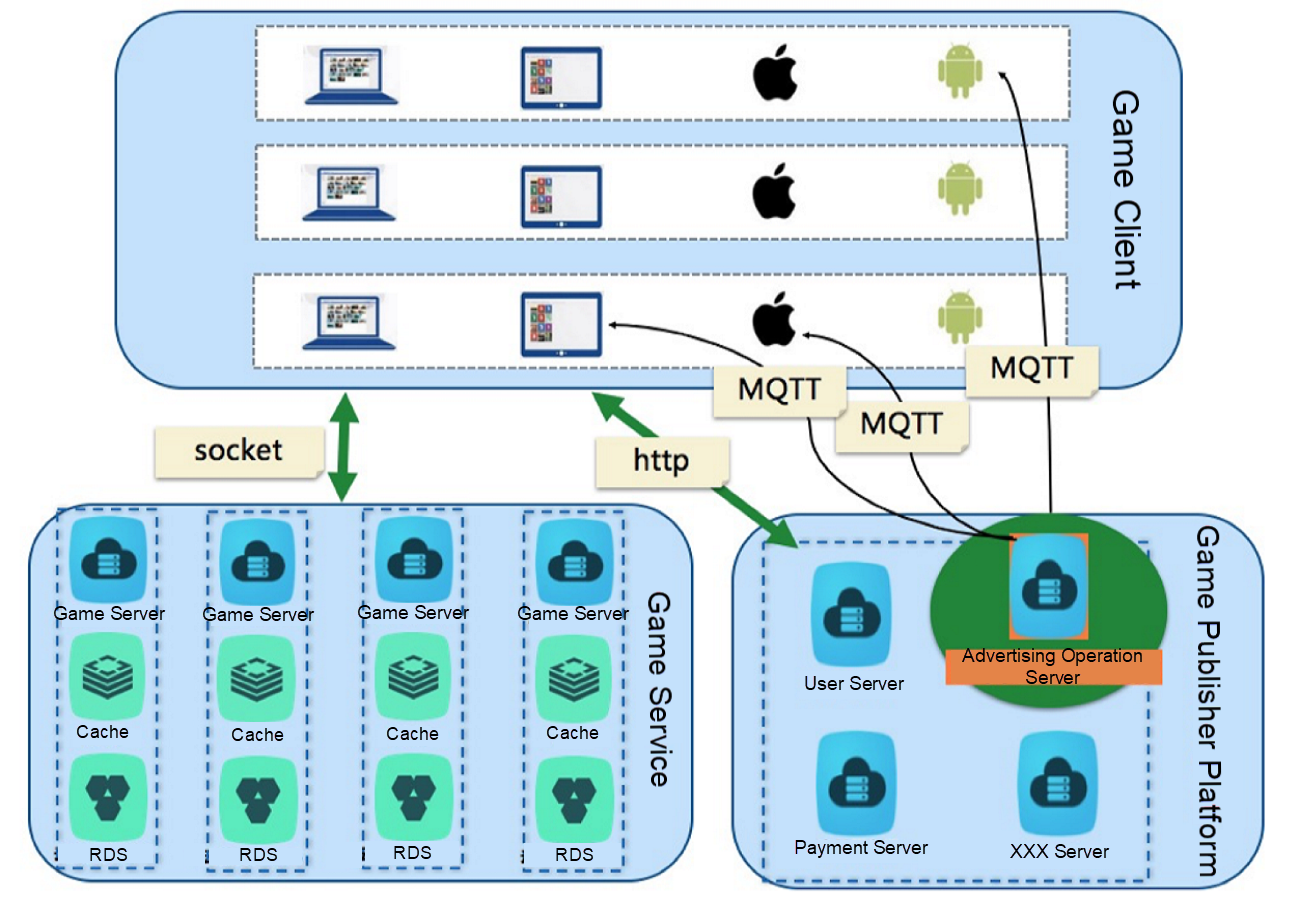The gaming ecosystem consists of game developers, operators, and publishers. The operation of a game is divided into two stages, R&D and operation. The former stage includes individuals, independent studios, and gaming R&D companies.
The gaming R&D company mainly focuses on game content R&D, resulting in an insufficient investment of workforce personnel and financial resources during game release and operation. Therefore, the game release and operation businesses are formed, with independent operators and publishers. Currently, many large game manufacturers in the market outsource publishing and operation to operators and publishers. Some game distribution channels also provide specific joint operation services based on their traffic.

The interaction in the preceding figure involves:
The solutions for the interaction of these two parts are relatively fixed.
However, in scenarios about operation information and advertisement push, services are more actively pushed by game operators and publishers. These services include marquee information of server O&M and updates, account kick-out information, floating window advertising, and normal message pushing. It troubles a lot to choose a more suitable interaction mode with millions of game players.
This article explains the usefulness of Alibaba Cloud Message Queue for MQTT in the gaming industry. This chapter describes how to better support information operation and notification technically.
1. HTTP Polling Solution
Advantages:
Disadvantages:
2. Socket Solution
Advantages:
Disadvantages:
3. Kafka Solution
Advantages:
Disadvantages:
The number of client connections is insufficient to support a large number of gamers (clients) through simple clusters.
4. MQTT Solution:
Advantages:
Disadvantages:
Based on the comparison of the preceding three solutions, the MQTT solution is very suitable for the interaction scenario where game operators, publishers, and game clients perform data push. Its design principles are listed below:

The comparison between Alibaba Cloud Message Queue for MQTT and open-source MQTT is listed below:

On the platform of game release and operation, Alibaba Cloud Message Queue for MQTT can be used in data push scenarios between the operation platform and game clients. It ensures a million-level device connection, reduces resource utilization, and implements the management and control of complex message releases and subscriptions.


212 posts | 13 followers
FollowAlibaba Cloud Native - November 13, 2024
ClouderLouder - November 25, 2020
GeekHouse - October 19, 2018
Alibaba Container Service - July 9, 2025
GXIC - February 25, 2019
Alibaba Cloud Native Community - July 12, 2022

212 posts | 13 followers
Follow AliwareMQ for IoT
AliwareMQ for IoT
A message service designed for IoT and mobile Internet (MI).
Learn More ApsaraMQ for RocketMQ
ApsaraMQ for RocketMQ
ApsaraMQ for RocketMQ is a distributed message queue service that supports reliable message-based asynchronous communication among microservices, distributed systems, and serverless applications.
Learn More Gaming Solution
Gaming Solution
When demand is unpredictable or testing is required for new features, the ability to spin capacity up or down is made easy with Alibaba Cloud gaming solutions.
Learn More Message Queue for RabbitMQ
Message Queue for RabbitMQ
A distributed, fully managed, and professional messaging service that features high throughput, low latency, and high scalability.
Learn MoreMore Posts by Alibaba Cloud Native